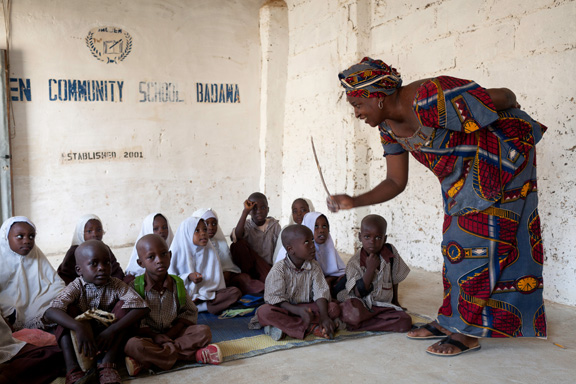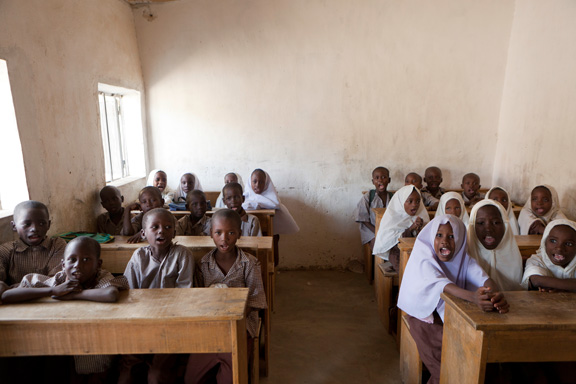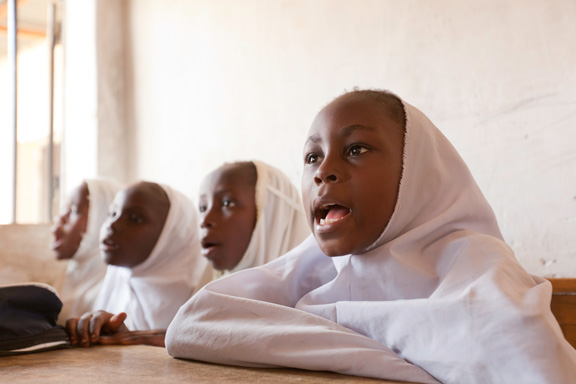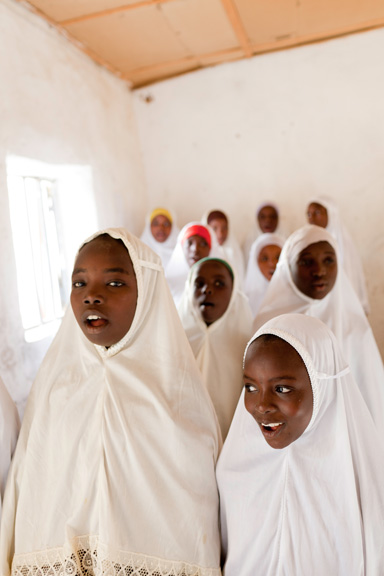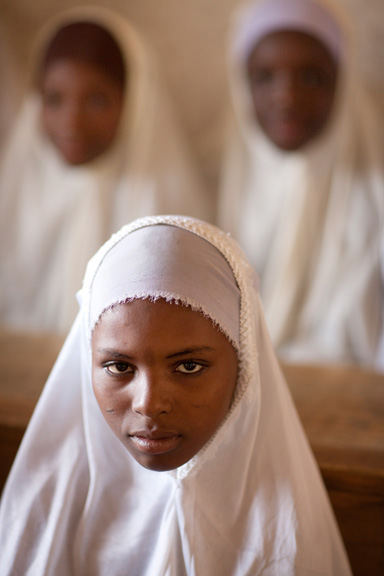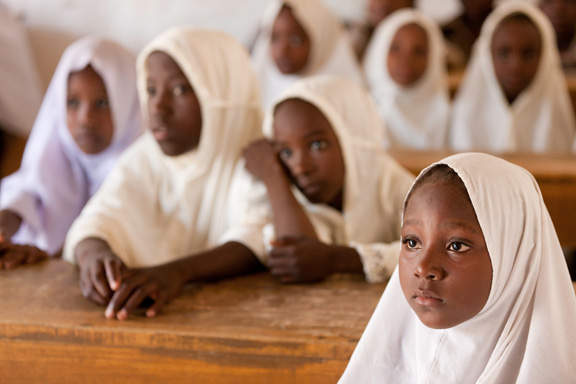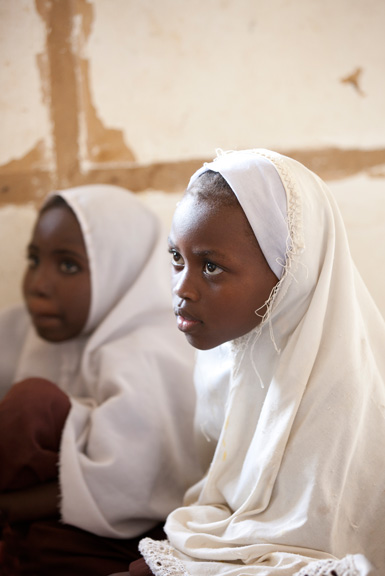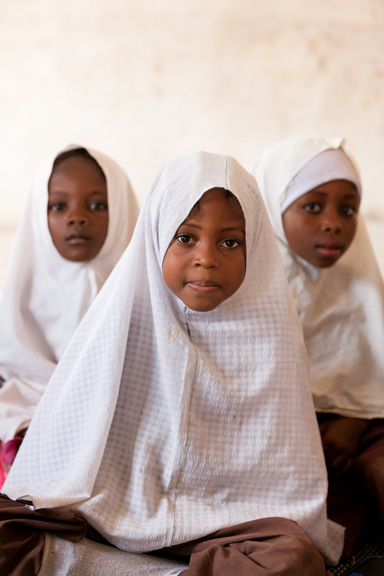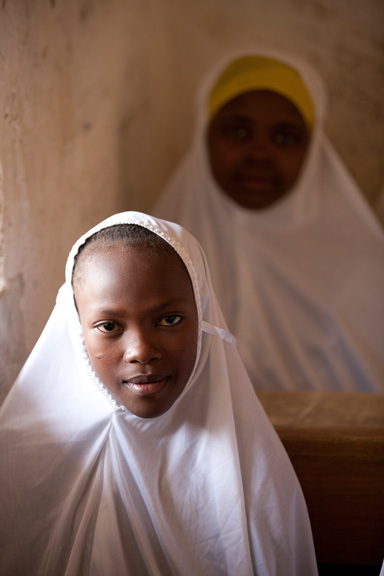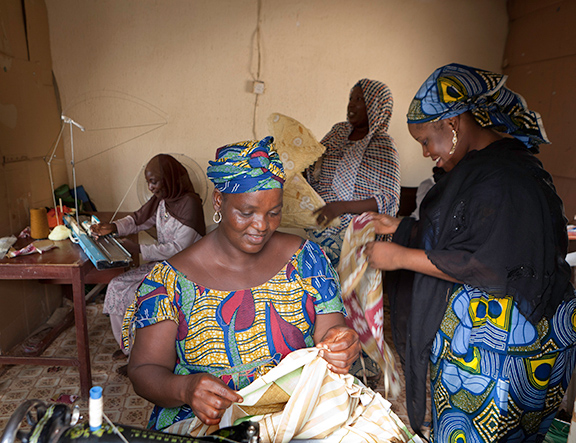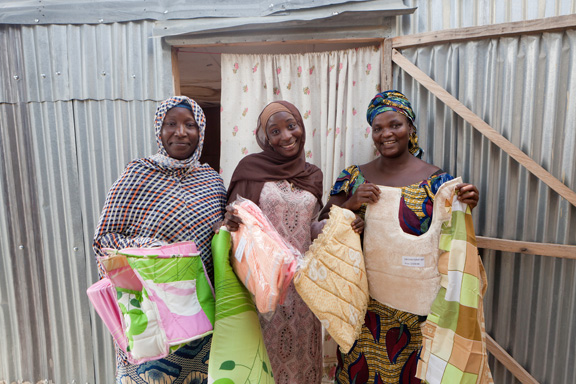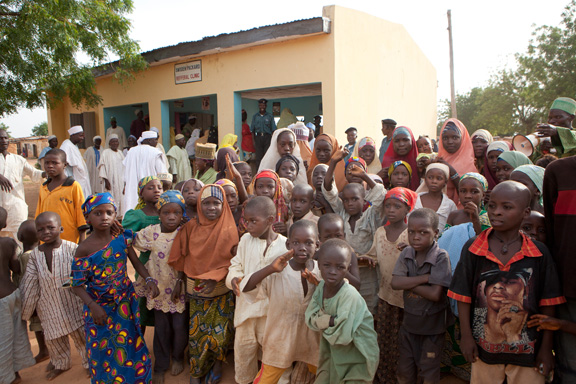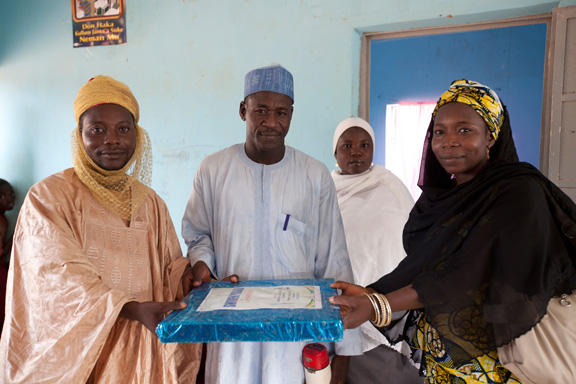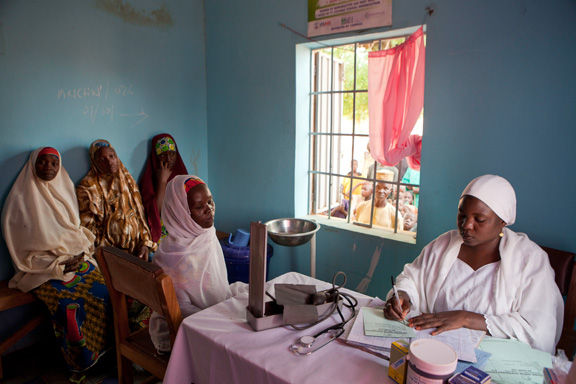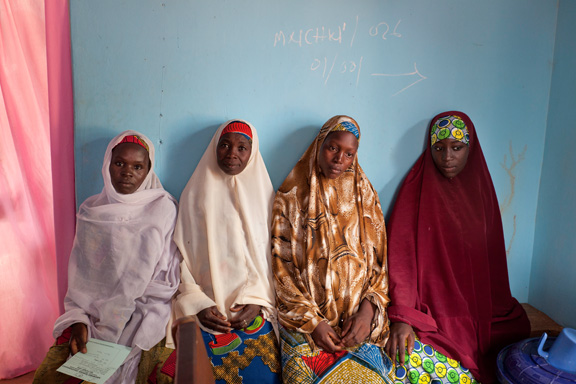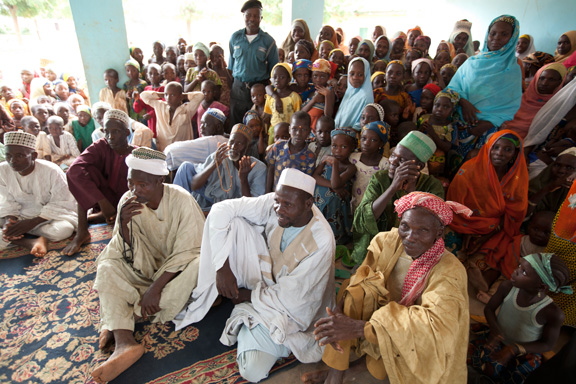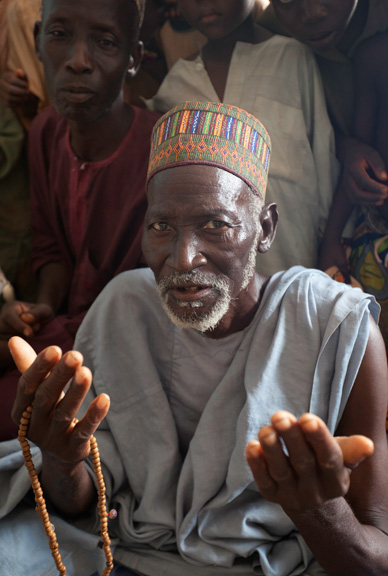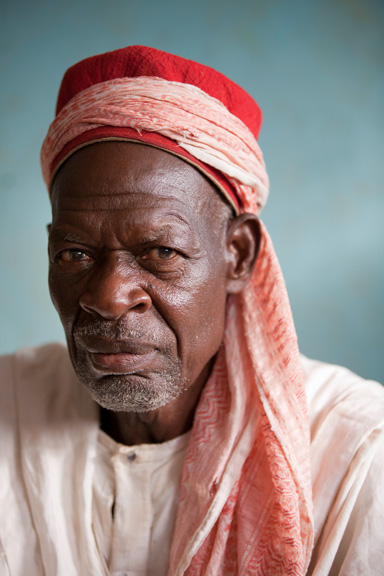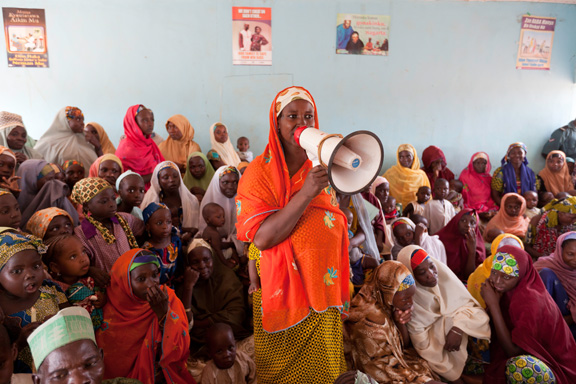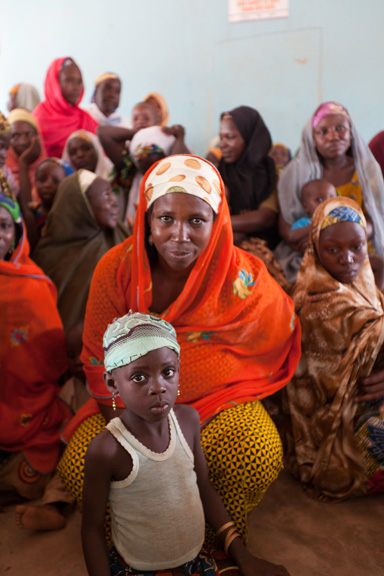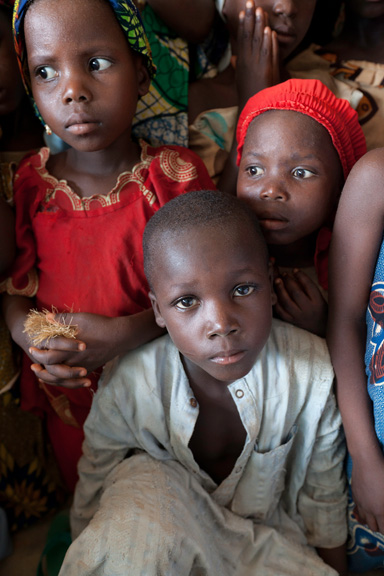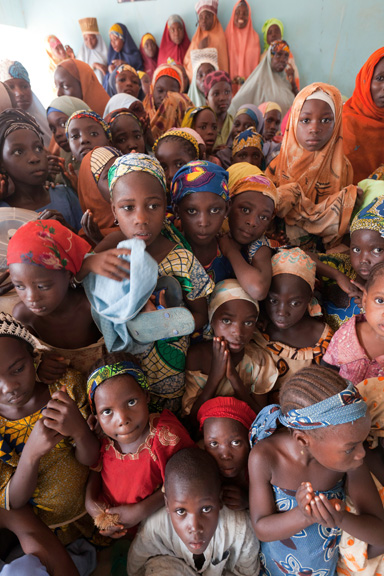SWODEN is a foundation supported by the Packard Foundation that operates in Kano, the second most populous Nigerian city after Lagos, which has an estimated population of 2.1 million inhabitants (from the 2006 Nigerian census). SWODEN is a multi-faceted NGO, whose work encompasses women’s reproductive health care, girl’s education, vocational-skills training, and microfinance – all with the express purpose of empowering women.
The SWODEN Community School project is designed to break the cycle of hopelessness that children experience from their impoverished environment. The school has operated since 2001 and is designed to give the students a positive, hopeful dimension to their lives. So far, the school has graduated 127 pupils, with many of them going on to secondary school. A total of 87 students are currently attending classes. The school offers scholarships, and provides the basic educational materials needed to attend, including uniforms, bags, sandals, books and writing materials. Of course, guidance and counseling are always available to each and every student.
We were rather late arriving to the school; our plane was delayed by 3 hours and I only had about 20 minutes to photograph there. Below are some select photos from my very shortened visit.
SWODEN’s program has a skills-acquisition training program, where women are instructed in simple trade and handicraft skills, including sewing, dying and quilting. A total of 203 women have graduated from this program since its inception in 2005. Microfinance loans are available, which give graduates an opportunity to increase their earning potential.
Our last leg of the SWODEN tour led us to a clinic in the village of Sarauniya, about an hour outside of Kano. Well aware of our arrival, a reception had been planned for the Packard Foundation in a show of appreciation for their funding of this community clinic. SWODEN has trained Community Health Extension Workers to educate their clients on reproductive-health measures, HIV management and prenatal care. When we arrived, the small country clinic was overflowing with community dignitaries and clients, waiting to greet us (they too had been waiting an extra 3-4 hours).
Arriving at the clinic:
A gift was presented by the Emir of the community (on the left) to Fatima Usman, Program Officer for Packard. The gentleman in the middle is one of the Emir’s aides.
The main exam room at the facility; the Community Health Extension Worker is taking the patient’s history.
Four women, in the same exam room, waiting to confer with the health worker.
Inside the larger waiting area, clear visual evidence of the number of people attending the community meeting, which also served as a reception for Packard.
Elders of the community were there in support of the family planning programs.
This elder was continually praying- I hope for the success of the program!
Close-up of an elder
Women and their very young children-
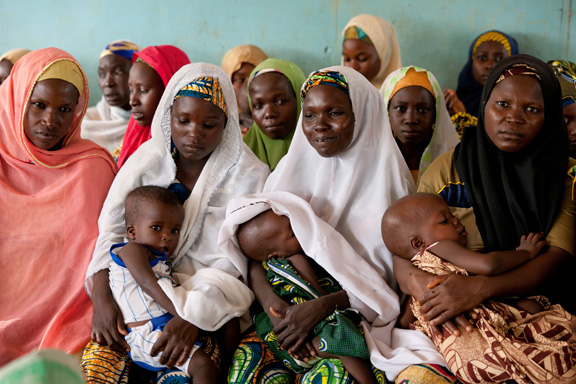 A mother telling her appreciation of the family planning program to the Emir and Fatima Usman from Packard. In the second photo she is shown with her 3 year old and one can see that she is clearly pregnant now. The increased spacing between births is a main focus of the family planning program.
A mother telling her appreciation of the family planning program to the Emir and Fatima Usman from Packard. In the second photo she is shown with her 3 year old and one can see that she is clearly pregnant now. The increased spacing between births is a main focus of the family planning program.
I believe the next three photos (especially the second one) will give a sense of the number of children in this small meeting place. Of all the places in the world I have traveled, this was the densest concentration of children in one small meeting room that I have ever experienced. It is commendable that the Emir and elders of the community are behind the family-planning programs, but birth rates are still high. Without decent education for these children, the cycle of poverty will no doubt continue.

